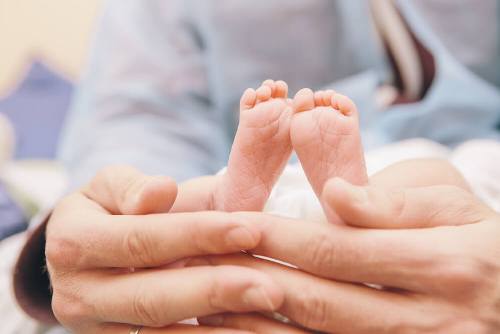This post is also available in: English हिन्दी (Hindi) বাংলা (Bengali)
The birthing process can happen normally, vaginally or we may have to interfere if there are complications to assist birthing by an operative method which is called the Caesarian Section. A normal vaginal delivery is the passage of the baby through the vaginal canal from the uterus during the birthing process. A C-section is the birthing of a baby through a surgical incision in the mother’s abdomen and uterus.
Pros of vaginal birth:

- The mother gets to actively participate in the process, giving her a more positive and empowering experience.
- The skin to skin contact during the process ensures better bonding between the baby and the mother
- The recovery is much faster, with mothers usually being able to walk with minimal pain the same day, as compared to needing at least a day’s rest after an invasive method. In a week’s time the mother is generally fully recovered from a vaginal birth.
- There are no painful stitches or scarring. Besides, the visits to the hospital are also fewer.
- When opting for a vaginal delivery, the baby is also ready to come out of the womb.
- During the process of being pushed out from the vagina, the baby’s lungs expel the amniotic fluids filled in them, allowing normal breathing and less respiratory problems.
- Babies born through vaginal birth undergo fewer complications. There are less instances of allergies and they also begin breastfeeding earlier.
- The baby inhales the good bacteria on coming out of the womb which helps in boosting the immune system.
Cons of vaginal birth:

- The time of childbirth remains uncertain and there is no way to schedule it.
- Going into labour is always painful and usually stressful.
- There is no fixed duration of labour.
- Sometimes there are complications which can lead to a drop in the baby’s heart rate. In such situations, the mother maybe given anesthesia and taken for an emergency C-section.
- Post vaginal delivery, there maybe few sexual problems faced by the mother due to injuries sustained during delivery.
- Sometimes when the baby is large then one might need assistance while delivery with suction cups or forceps.
Pros of C-section:

- When it is a planned procedure, it gives the parents the advantage of a schedule that can be stuck to.
- The mother can avoid long hours of labour by opting for a C-section. This lets the mother avoid all the stress and labour pain.
- The mother is not expected to face any sexual problems post a C-section birth.
- The baby is less likely to be affected by any infections being carried by the mother.
- There are fewer chances of the baby being injured during birth.
Cons of C-section:

- The use of anesthesia adds to the risk of complications.
- There is also greater blood loss.
- The risk of infection increases.
- The recovery period is longer compared to natural child birth.
- The breastfeeding process might get delayed.
- C-sections have a higher mortality rate for both babies and mothers. Being put under anesthesia increases these risks.
- In some cases the baby faces respiratory problems after being born.
When to opt for a planned C-section:
- Cephalo-pelvic disproportion- Where the pelvic space and shape is not suitable for the baby to descend and come out. It can also be due to the fact that the baby is too large.
- Placenta-Praevia- When the placenta is in the lower section of the uterus and is likely to separate and come out before the baby does.
- Multiple pregnancies.
- Fetal distress.
- A planned C-section is also recommended if the mother has other medical conditions such as respiratory distress, Hypoglycemia (low blood sugar) or poor ability to maintain her temperature or problems with
Opting for a C-section can be a life-saving birthing process when the labour is obstructed or when there’s a maternal complication or fetal distress. However the procedure cannot be taken lightly and needs to be used with care and not as an alternative to easy birthing.
Dr Rajul Matkar
Specialist Obstetrician & Gynaecologist
About the author of the blog

Dr Rajul Matkar is an internationally-recognized Obstetrician & Gynaecologist, with 27 years of clinical experience. She has received specialized training in minimally-invasive gynaecologic surgery from Kiel University, Germany, and has completed training for advanced colposcopy and directed procedures under the British Society for Colpo Cervical Pathology (BSCCP).
Dr. Matkar is a respected and sought-after source for the popular press and has been quoted in several publications in India and abroad. She has also given talks at various scientific institutes in the UAE.
This post is also available in: English हिन्दी (Hindi) বাংলা (Bengali)










